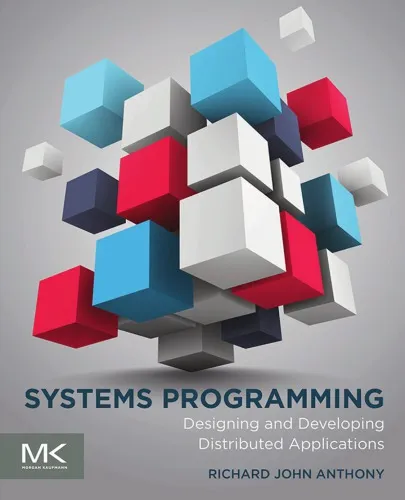Systems and Computers in Japan
4.0
Reviews from our users

You Can Ask your questions from this book's AI after Login
Each download or ask from book AI costs 2 points. To earn more free points, please visit the Points Guide Page and complete some valuable actions.Related Refrences:
Analytical Summary
The book Systems and Computers in Japanpp.10—24 stands as a significant contribution to the study of computing systems within the Japanese context, offering a meticulous examination of technical frameworks, systemic architecture, and the evolving role of information processing technologies in a country recognized for its innovation-driven culture. Authored by Kazuyuki Shudo, Satoshi Sekiguchi, and Yoichi Muraoka, this particular section—spanning pages 10 through 24—delivers a dense yet accessible analysis suitable for scholars, practitioners, and policy-makers.
Within this segment, the authors bridge theoretical foundations with empirical observations, spotlighting the development patterns of computer systems in Japan during critical periods of technological transition. Readers will find a synthesis of system design principles, performance considerations, and societal impacts, framed in a way that resonates with global computing discourse while retaining a distinctly Japanese perspective.
Although information about its publication year is unavailable due to a lack of reliable public sources, the relevance of these pages is undiminished. The discussions remain pertinent to anyone studying comparative information systems or analyzing the cross-cultural adaptation of computing methodologies.
Key Takeaways
By delving into these pages, readers gain both a technical and cultural understanding of how Japanese computer systems have been conceptualized, implemented, and evaluated.
The narrative balances granular system-level detail with systemic insights, making it an invaluable reference for researchers examining the intersection of technology and society.
Two prominent secondary themes emerge: the disciplined engineering mindset prevalent in Japanese information technology advancements and the continuous feedback loop between academic research and industrial application.
Memorable Quotes
While largely technical in nature, Systems and Computers in Japanpp.10—24 contains concise statements that encapsulate its scholarly rigor.
“The evolution of a system is not solely a technical process, but a reflection of the cultural and organizational context in which it resides.” Unknown
“Performance metrics must be interpreted with an appreciation for the unique constraints and goals of the environment.” Unknown
“In Japan, iterative refinement is more than a methodology; it is a philosophy woven into system development practices.” Unknown
Why This Book Matters
Understanding foreign approaches to computer systems, such as those described in Systems and Computers in Japanpp.10—24, enriches any global discussion on technology.
For academics, these insights provide valuable comparative data points. For professionals, they offer a lens through which current practices can be evaluated and adapted. Moreover, the book exemplifies how Japanese information technology advancements are deeply interwoven with national culture, industrial priorities, and educational frameworks.
Its methodical analysis helps bridge gaps between theory and practice, enabling a deeper appreciation for the intricate balance between efficiency, reliability, and cultural considerations in system development.
Inspiring Conclusion
In summary, Systems and Computers in Japanpp.10—24 is more than a slice of technical literature; it is a portal into a distinctive philosophy of computing that harmonizes rigorous engineering with cultural nuance.
By integrating both domain-specific knowledge and broader societal perspectives, the authors provide content that remains instructive for diverse audiences. Even though certain bibliographic details like the exact publication year are noted as “Information unavailable,” the analytical depth contained here withstands the test of time and technological change.
Readers who approach these pages will find themselves better equipped to engage in critical discourse, apply lessons to contemporary projects, and appreciate the global diversity of computing approaches. Engage with this work, share your reflections with peers, and consider how the principles explored can inform and inspire the next generation of systems development.
Free Direct Download
You Can Download this book after Login
Accessing books through legal platforms and public libraries not only supports the rights of authors and publishers but also contributes to the sustainability of reading culture. Before downloading, please take a moment to consider these options.
Find this book on other platforms:
WorldCat helps you find books in libraries worldwide.
See ratings, reviews, and discussions on Goodreads.
Find and buy rare or used books on AbeBooks.
1025
بازدید4.0
امتیاز0
نظر98%
رضایتReviews:
4.0
Based on 0 users review
Questions & Answers
Ask questions about this book or help others by answering
No questions yet. Be the first to ask!







![[ An Introduction to Functional Programming Systems Using Haskell[ AN INTRODUCTION TO FUNCTIONAL PROGRAMMING SYSTEMS USING HASKELL ] By Davie, Antony J. T. ( Author )Jun-18-1992 Paperback](https://s3.refhub.ir/images/thumb/An_Introduction_to_Functional_Programming_Sys_34929.webp)






